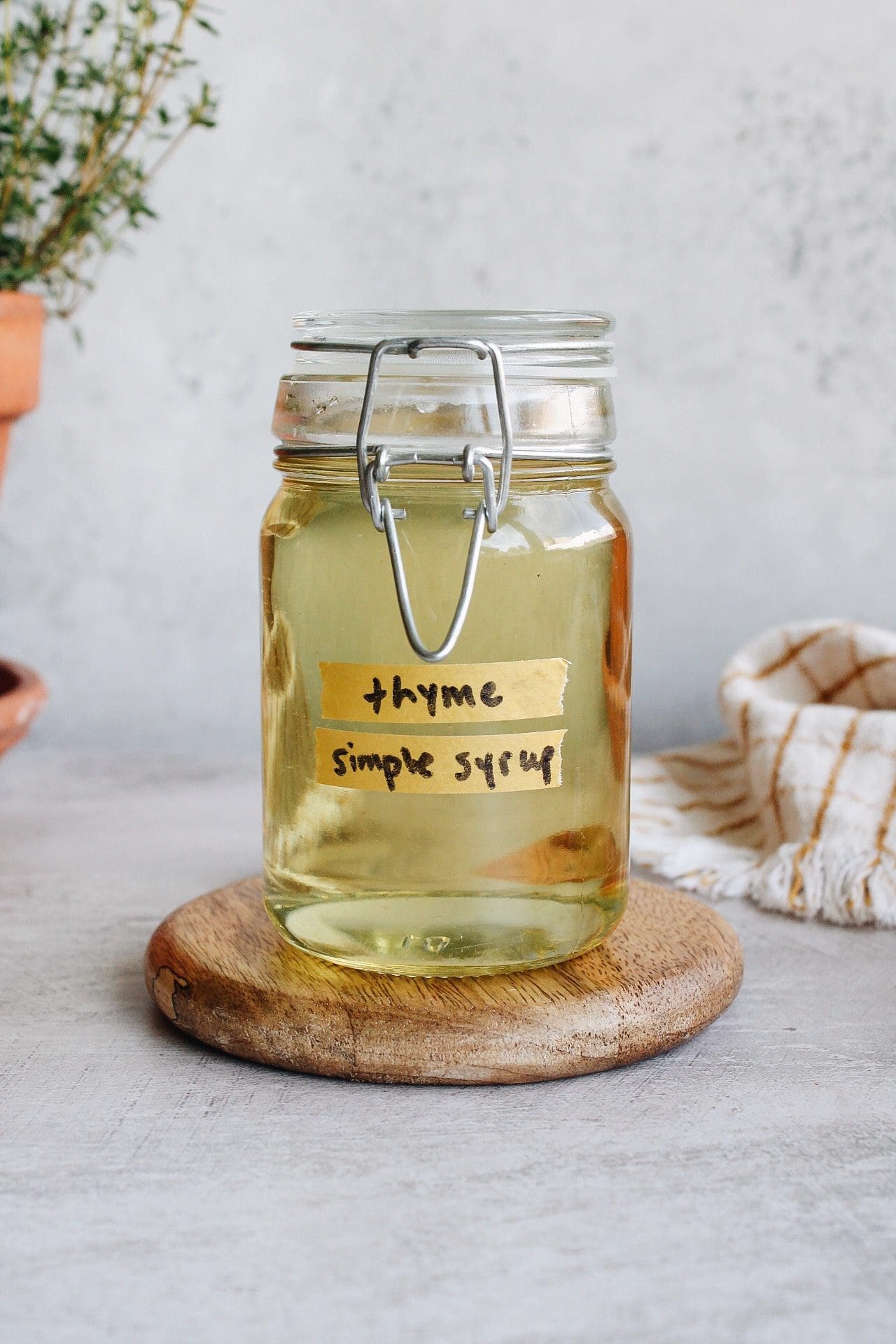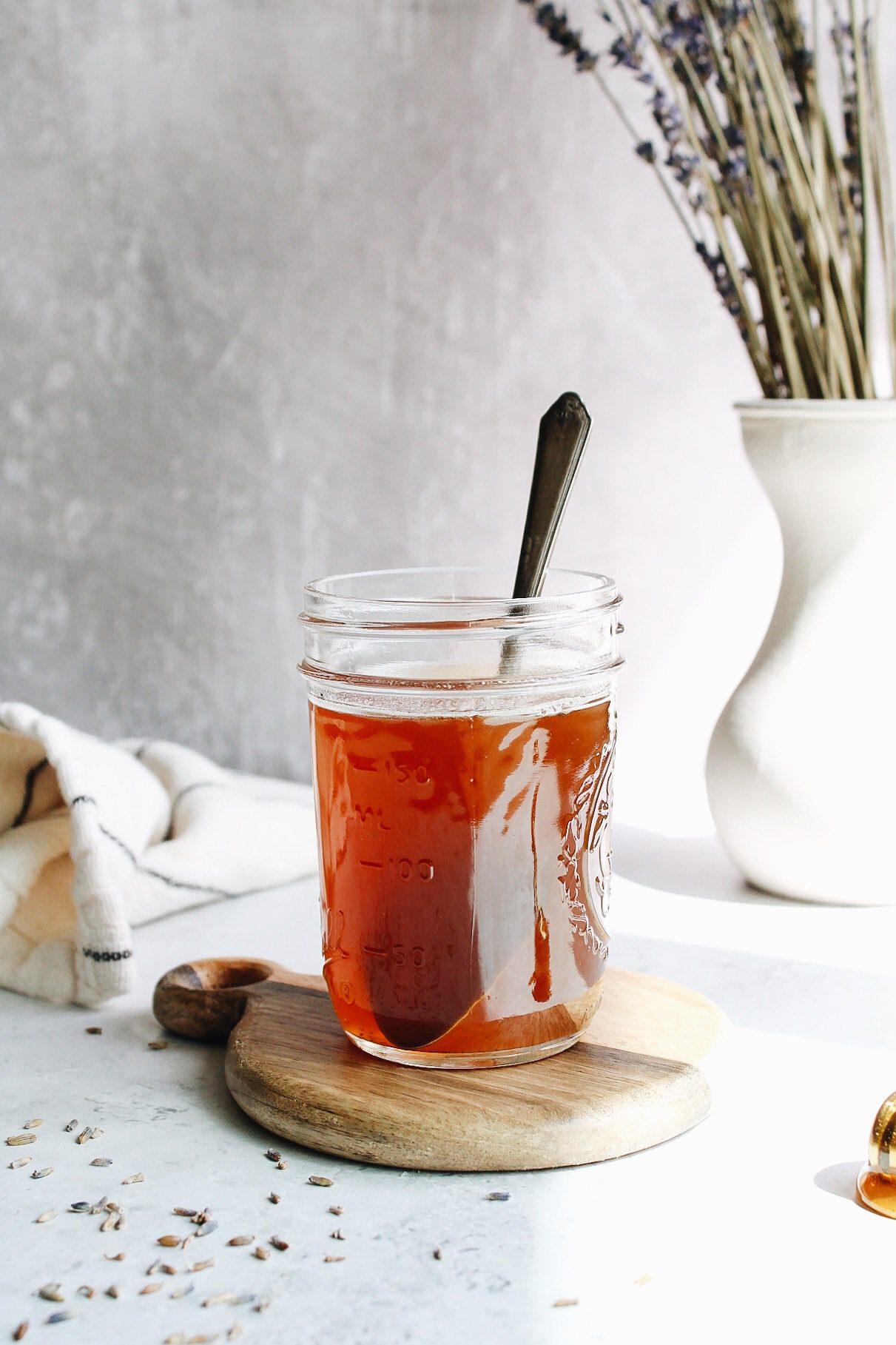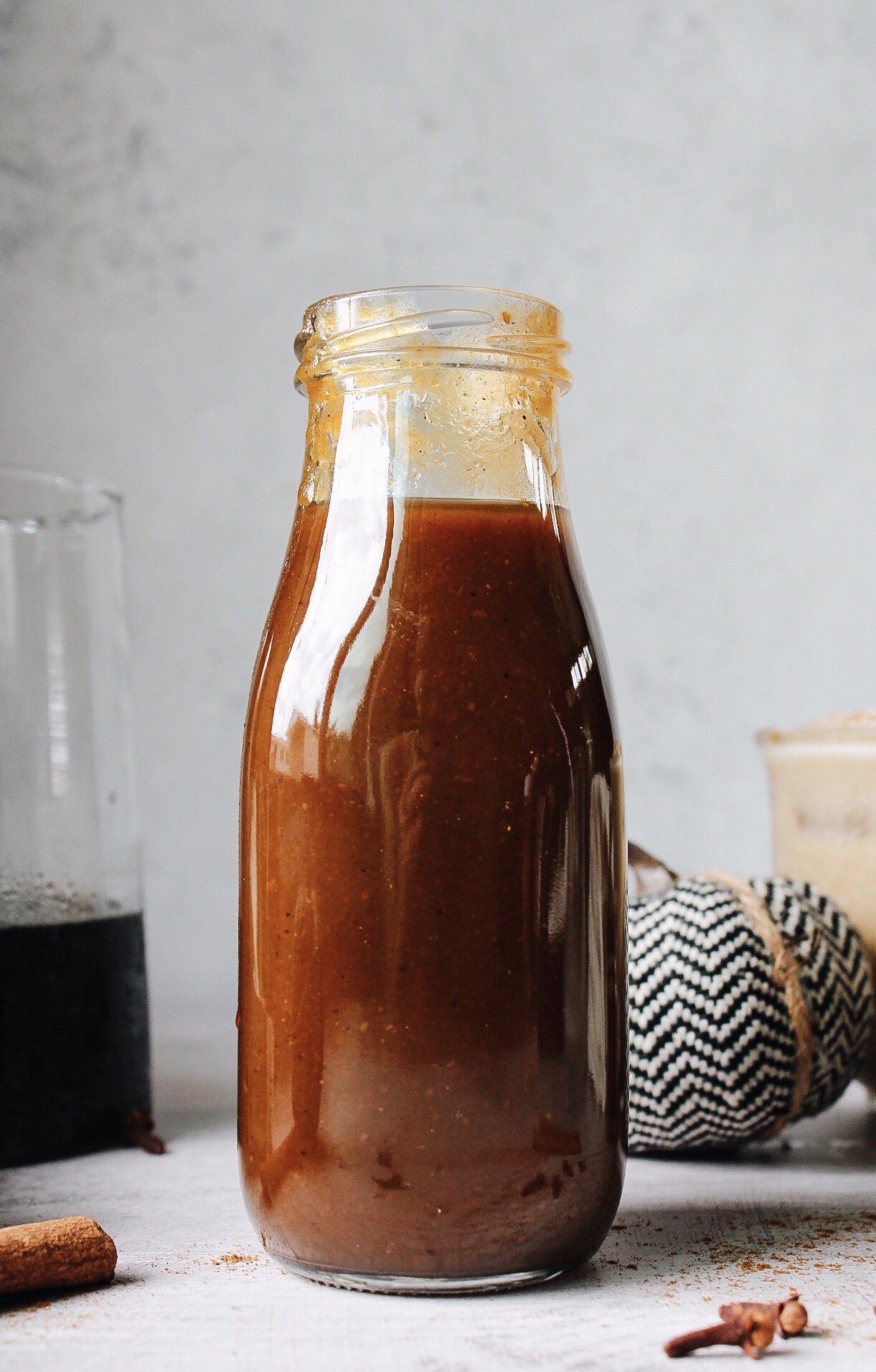How to Make Sourdough Starter
So you want to make your own sourdough starter? Well I’ll tell you all about how to make it in this post!
Sourdough starter is a leavening agent thats formed naturally by microscopic wild yeast and bacteria present in the air of your home. Pretty cool huh? I received The Little House Cookbook as a gift a couple of years ago and sourdough starter was the first thing I made. I really knew very little about sourdough at the time but I was amazed that I could make my own starter with just flour and water. It’s taken me a while but I’m finally creating a step by step guide to making your own sourdough starter. I just got distracted making pizza, scones, chocolate cake and brownies, lol. Let’s make some!
How to make sourdough starter
Days 1-3

On the first day, start by adding 1 cup of all-purpose flour to a cake pan and place it on a shelf in your home. This exposes the flour to the microbes in the air. I’ve seen other sourdough starter instructions that do not include this step so I’m sure it works without doing this but this is the way I’ve done it according to the The Little House Cookbook. Keep it in a place that will be safe from pets and vacuum cleaner debris, etc.
Allow the flour to sit like this for 2-3 days.
Days 3-5
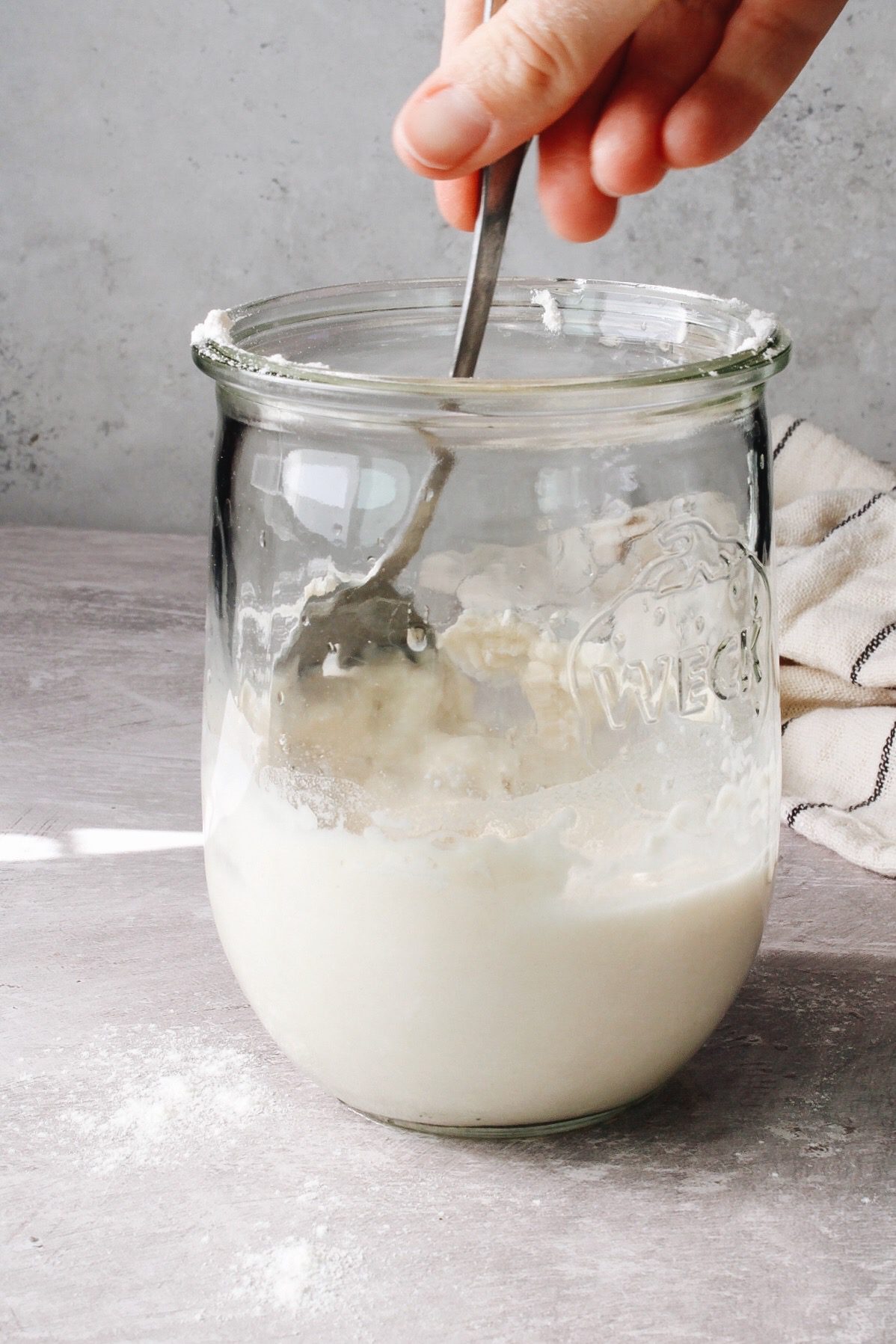
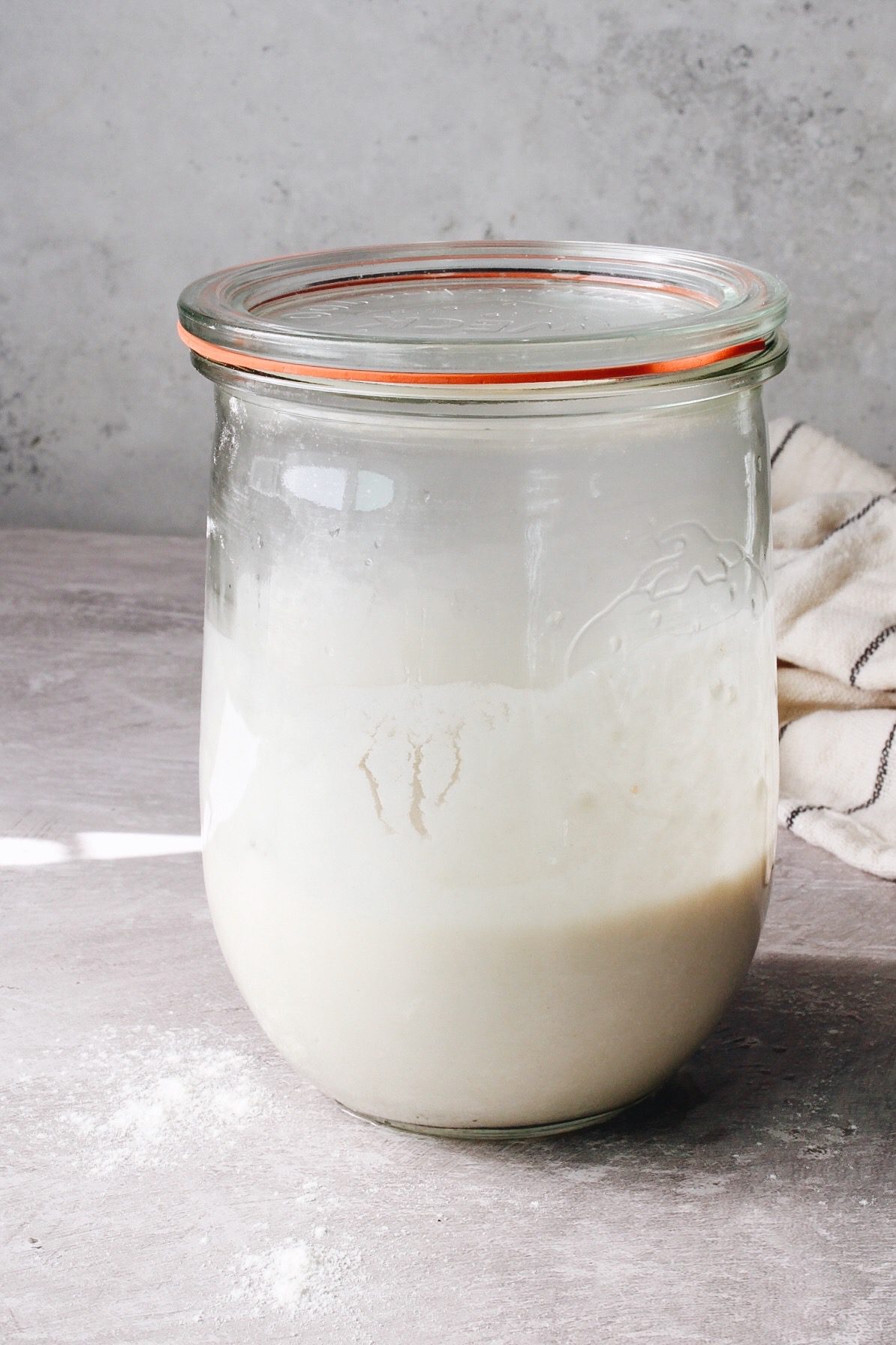
Add the flour to a jar (I love my Weck Sourdough Starter Jar), then add a scant cup of warm water. Cover the jar and leave it in a warm place. I usually set it near our wall heater, further away if we are using the heater. The temperature should be between 70 and 90F. Allow the flour and water mixture to sit until bubbles start to appear.
This stage will take 1 or 2 days.
Days 5-6 Hooch on sourdough starter begins to develop
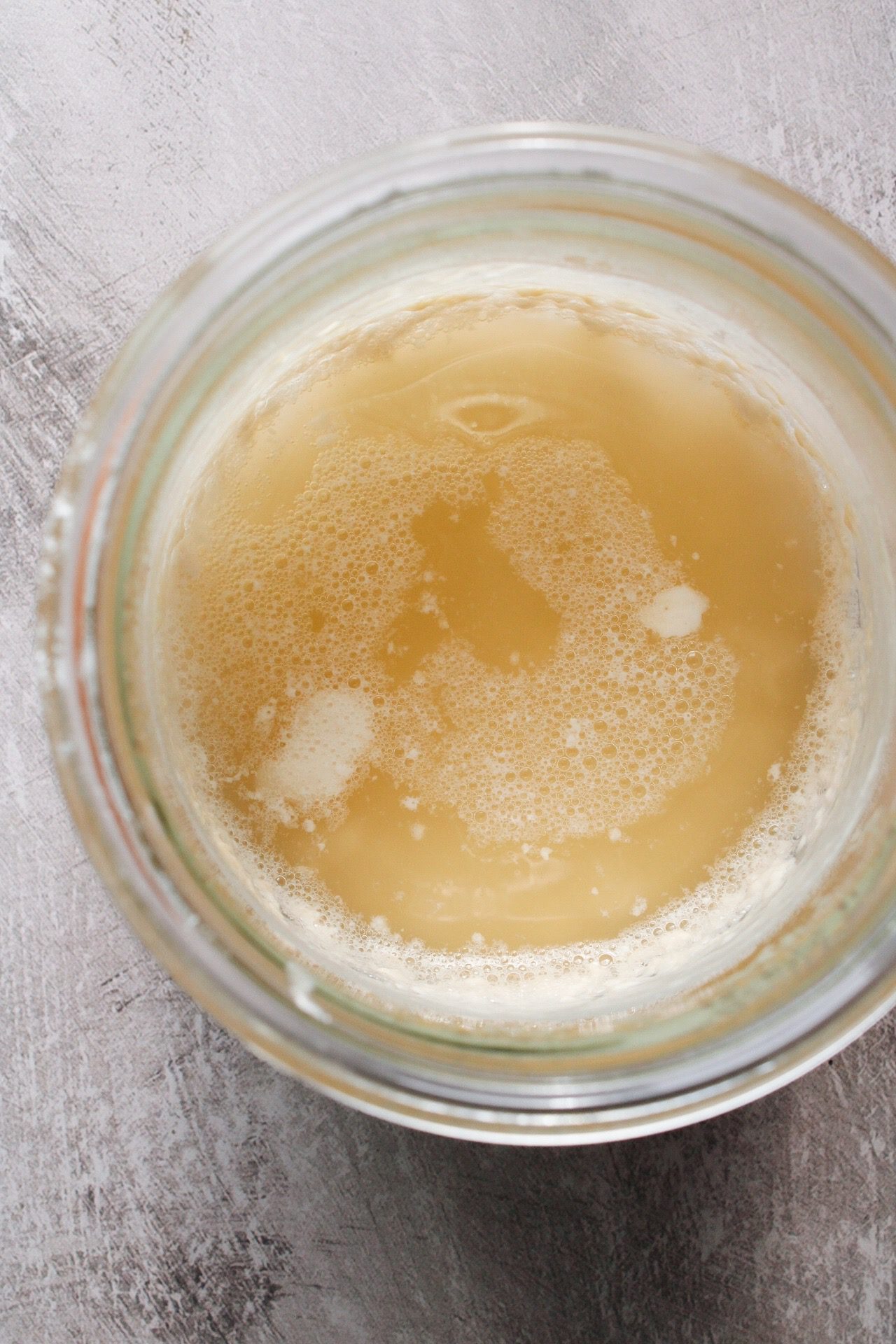
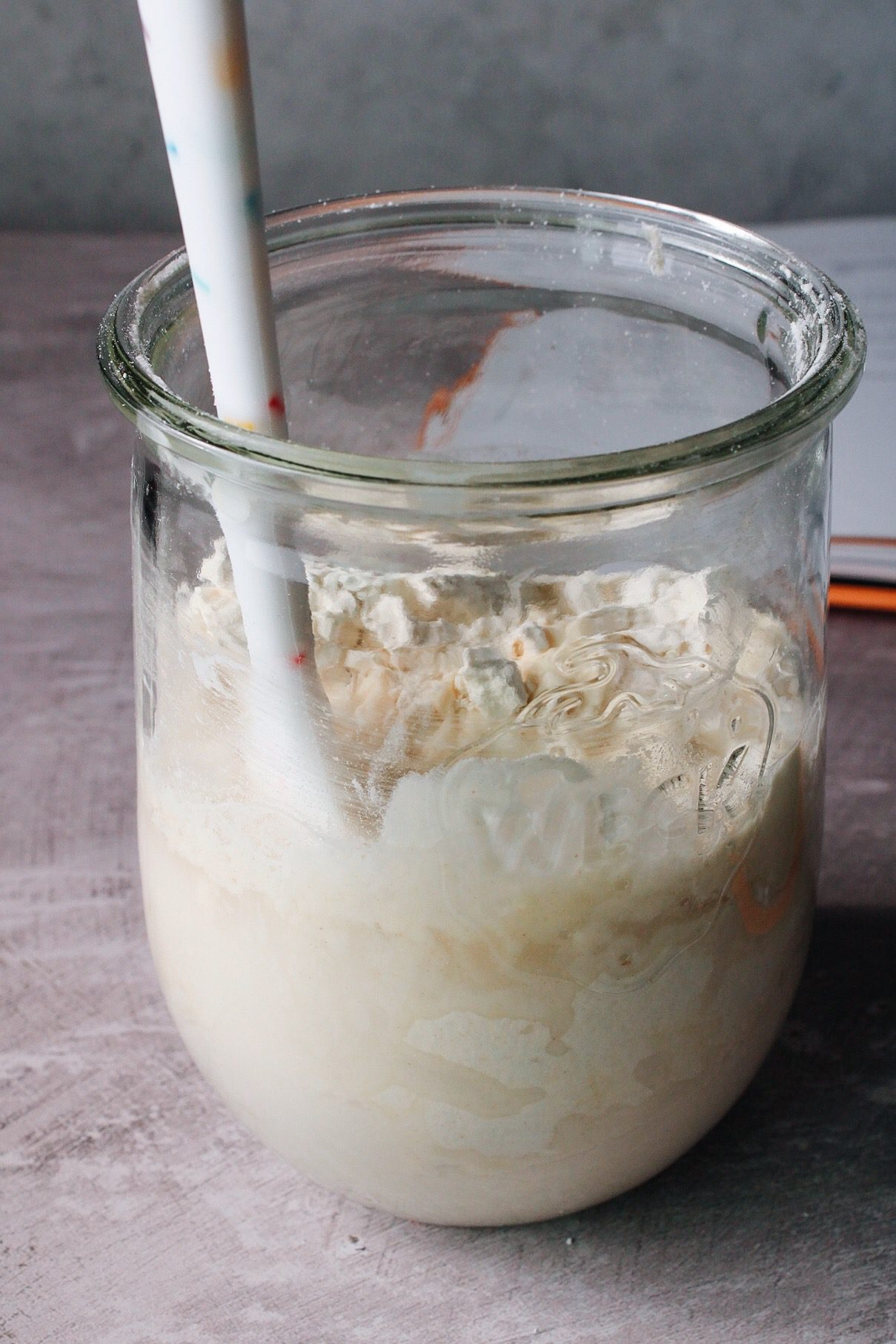
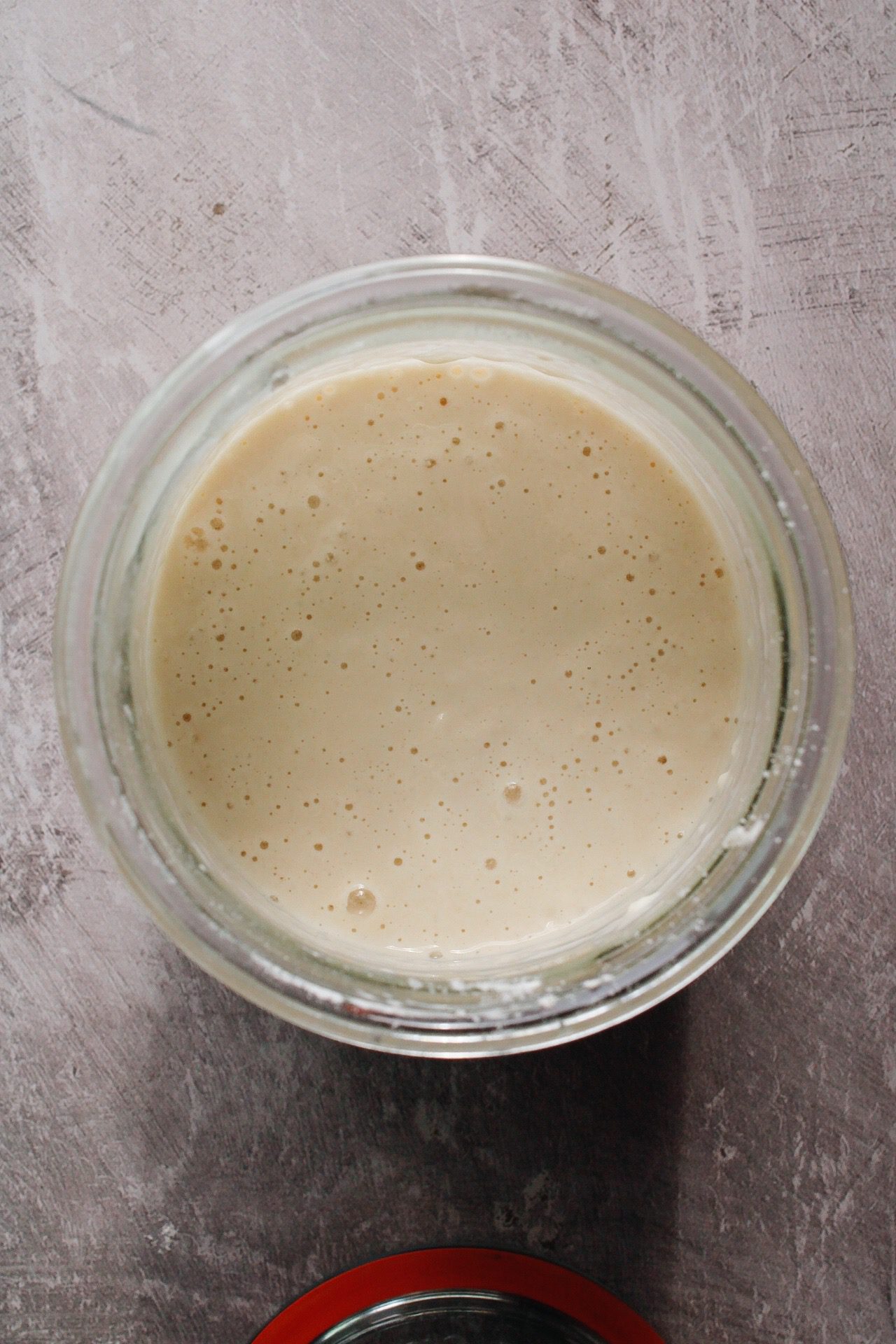
It is likely that your sourdough starter will have developed hooch at this point, which is that light brownish colored liquid on top that can be seen in photo #1 above. Hooch on sourdough starter means that it’s hungry! When your starter develops hooch, try to feed it as soon as possible. The longer you let it sit like that, the more likely your starter will go bad.
How do I feed my sourdough starter?
If you want a healthy and usable starter, you need to “feed” it regularly. But don’t worry! Feeding sourdough starter is easy and only requires flour and water. Feed your starter with flour and water twice a day until you see it double or triple in volume within 6-8 hours. When you see this, you’re ready to use it for baking! More on keeping your sourdough fed below.
Sourdough starter day 5-6 cont’d
Pour off the liquid. Discard about half of the sourdough starter. Then add 1 cup all-purpose flour and 1 cup of warm water (Photo #2 above).
You can actually either stir in the hooch or you can pour it off (I usually pour it off so that I can know how much liquid and flour my starter is getting which is important when you start getting into hydration levels and what not.
Stir and cover the starter once again.
How to store and maintain sourdough starter
You can choose to store starter at room temperature or in the fridge.
Room temperature storage
Room temperature storage is ideal if you plan to use it often. When stored at room temperature, starter might need to be fed at least once per day (ideally every 12 hours) to keep it ready to bake with. Now, this doesn’t mean if you miss a feeding that you will kill it. But there’s a difference between killing the starter and it just not being very active/in an optimal state for baking.
In my opinion, it’s probably just best to store it in the fridge unless you plan to use it more than once per week.
Fridge storage
If you choose to store your starter in the fridge, which is what I do, you’ll need to revive it (a.k.a. feed it) once per week. When you plan to make something with it, try taking it out the night before to let it warm up. Once you use the discard in your bake, feed the starter and allow it to sit at room temperature for about 2 hours before returning it to the fridge.
How to feed your sourdough starter
While this can get sort of complicated, I like to keep it simple. You might see recipes using sourdough starter that say 100% hydration or 70% hydration, etc. This refers to the ratio of flour and water used to feed the starter. 100% just means the starter is fed with equal parts flour and water.
When I feed my starter, I follow the method from The Little House Cookbook. I discard about half of the starter (or use it to bake something), leaving about 1/2 a cup. Then I feed it with 1 cup of water and 1 cup of all-purpose flour.
How often to feed sourdough starter
If you choose to store your starter in the fridge, you’ll need to feed it once per week. If you smell an alcohol-type smell, this means you will likely need to feed it more often. When you store your sourdough starter at room temperature, it will need to be fed approximately 2 times per day (ideally every 12 hours) to keep it ready to use.
How to tell if you have bad sourdough starter
Here’s the deal, I’ve made this starter several times because I neglected it to a point where I just did not feel comfortable using it, even though it wasn’t showing any of the signs that indicate that it shouldn’t be used. As you learned in this post, making a sourdough starter is easy! So if you don’t feel right about your starter, listen to your gut and start over. With that said, here are some things to look for that will definitively tell you that you have bad sourdough starter on your hands. Your starter has turned bad and should be thrown out when it has:
- Orange or pink streaks
- Actual mold growing on the starter or anywhere in the jar
- Strong, foul odor (although an alcohol-type smell is ok, it just means you need to feed it more often)



